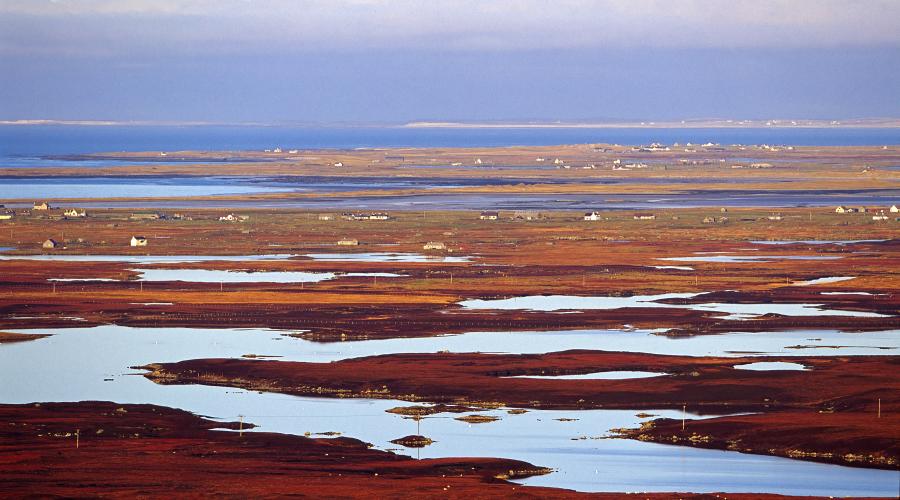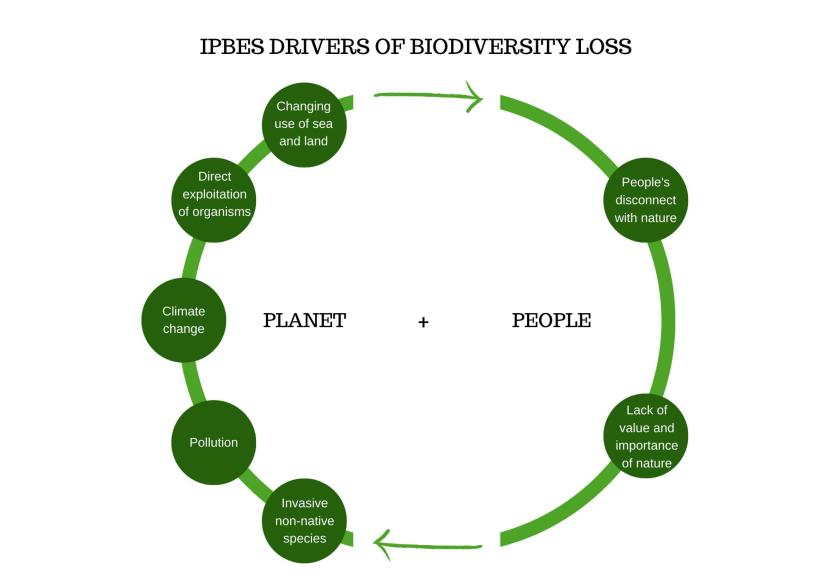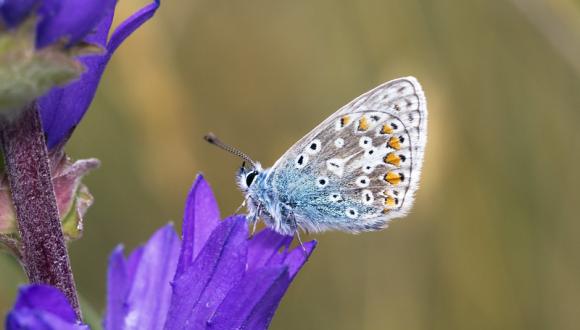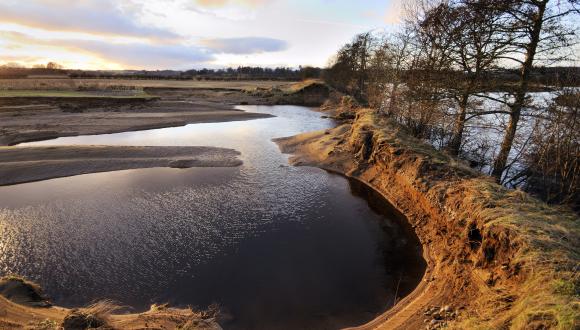
Key pressures on biodiversity
Discover the pressures that biodiversity is under and why biodiversity is important for you and our planet
In Scotland and all over the world there are pressures on nature. Through identifying the key pressures on biodiversity we can help to address these.
Globally
In 2019, the IPBES (the Intergovernmental Science-Policy Platform on Biodiversity and Ecosystem Services) published the Global Assessment for Biodiversity and Ecosystem Services, also summarised in this short IPBES animation. This report identified five direct drivers of global biodiversity loss, as shown on the left, and two indirect drivers, shown on the right in the infographic below.

The IPBES identified the five direct drivers of biodiversity loss as changing use of sea and land, direct exploitation of organisms, climate change, pollution and invasive non-native species.
The two indirect drivers are people’s disconnect with nature and the resulting lack of value placed on the importance of nature.
Scotland
These global drivers are also affecting Scotland’s nature and its most special natural features. The State of Nature (Scotland) report 2019 shows similar drivers to the IPBES report, and tells us that we are losing nature in Scotland. The report’s data show that the number of species, and their geographic spread in Scotland, has overall declined in recent history. Most scientific measures show this decline to have continued in the last decade. Though some pressures on nature, such as freshwater pollution, have improved in recent decades, overall the pressures are still having a strong negative effect.
These publications and Scotland’s Biodiversity: A Route Map to 2020 confirm that the following key pressures on biodiversity must be tackled:
Changing use of sea and land
The biggest driver of biodiversity loss is the way in which people use the land and sea. How we grow food, harvest materials such as wood or minerals from the ocean floor, and build our towns and cities all has an impact on the natural environmental and the biodiversity that lives there. Find out more about land use intensification and modification.
Direct exploitation of organisms
Direct exploitation of organisms refers to how we exploit animals and plants for food and materials. In Scotland, this can look like over-fishing. Find out more about we manage our seas to combat marine exploitation.
Climate change
Climate change is having a dramatic impact on our natural environment. Some species are dying out while others are having to move where they live due to changes in air temperature, weather patterns, and sea levels. As well as being a direct driver of biodiversity loss, climate change also worsens the other drivers. For example it enables quicker spread of non-native invasive species. Find out more about how climate change is impacting biodiversity.
Pollution
Pollution has reached all types of ecosystems, even those in remote areas. Pollution comes in many forms, from nitrogen and ammonia caused by intense agriculture, to microplastics found in the deepest parts of the ocean. You can find out more about freshwater pollution, marine pollution, pollution on land.
Invasive non-native species
Invasive non-native species are those that arrive where they historically didn’t occur, and out-compete local biodiversity for resources such as sunlight and water. This causes the native species to die out causing a shift in the makeup of the natural ecosystem. Some examples of invasive species not native to Scotland are Japanese knotweed, Himalayan balsam and the American mink. Find out more about the spread of invasive species and what you can do to help tackle them.
Indirect drivers
The indirect drivers are the underlying causes of the direct drivers of biodiversity loss. The IPBES report, and others have identified these to be people’s disconnect with nature and the consequent lack of recognition for the value and importance of nature. If people do not feel connected to nature, and therefore don't care for nature and see its importance, they are more likely to over-exploit and not take seriously the impacts of climate change, pollution and invasive non-native species. To find out more about how you can connect with nature, and encourage others to do the same, visit our pages on enjoying the outdoors.
Read the report summary: Understanding the Indirect Drivers of Biodiversity Loss in Scotland
The drivers of biodiversity and climate change have been identified, and we need to address these in a structural and urgent manner. Transformative change in society is needed to ease the pressures on biodiversity, reverse these losses of nature and to avoid severe damage to human wellbeing.
Visit our page on Scotland’s indicators and trends to find out more on how our natural environment is changing over time, and how we measure the health of our ecosystems. You can also find out what you can do for biodiversity.





